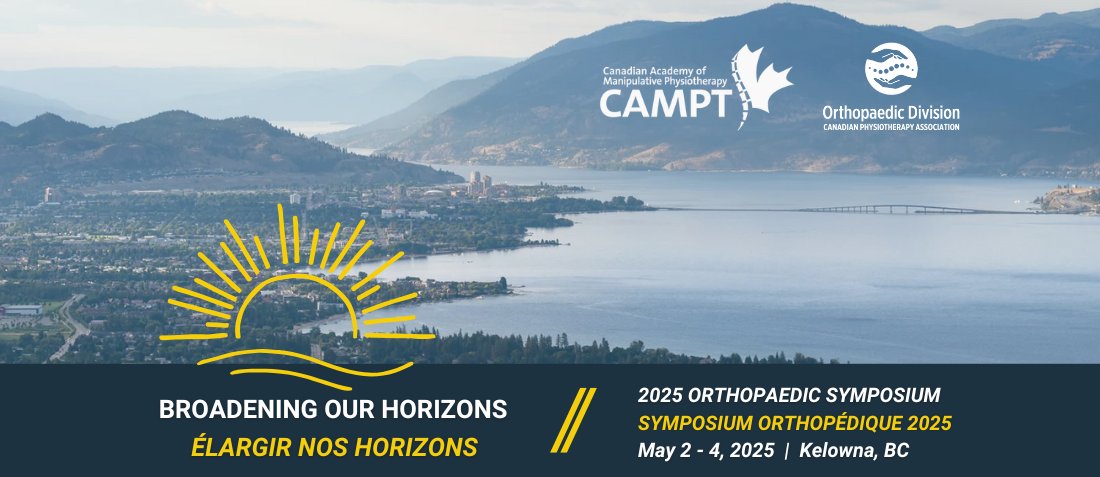Confidence during a change-of-direction task varies more than time in patients following ACL reconstruction (15 min)
Evidence indicates measuring psychological outcomes, such as readiness and confidence, may improve return to sport assessment (RTS) decision making following anterior cruciate ligament reconstruction (ACLr). The purpose of this study was to evaluate performance in a change-of-direction (COD) task alongside patient and clinician ratings of confidence. 46 patients completed the 505 COD, single, triple and triple crossover hop tests at six months following unilateral ACLr. Patients rated their confidence on each limb following completion of the COD alongside a clinician’s perception of patient confidence. Time did not vary between limbs for the COD despite reduced affected limb performance on the single, triple and triple crossover hops. Patients and the clinician rated confidence on the affected limb lower, although there was minimal to no correlation between clinician and patient ratings. The current methodology used during the COD may not be reflective of underlying performance deficits as participants are able to adapt their speed of movement over the timed distance. Considering patient confidence, movement strategy, and assessment methodology may have relevance in guiding clinical decisions.
Bio:
Brittany is a Certified Athletic Therapist (CAT(C)), NSCA Strength and Conditioning Specialist (NSCA-CSCS), and a College of Rehabilitation Sciences graduate student completing her 2nd year of her Master’s Degree at the University of Manitoba. She recently transitioned from a clinical and gym setting to work full time in orthopaedic and rehabilitative research at Pan Am Sports Medicine Clinic.

Knowledge Translation of Qualitative Research, the key to Patient Centred Care (30 min)
Qualitative studies in orthopaedic physiotherapy are rarely published and if so, are relegated to the basement of the evidence hierarchy pyramid. Unsurprisingly, practitioners are unaware of or misperceive the potential benefit of qualitative studies to inform sound practice. Qualitative data can tell vivid, memorable stories from patient and clinician perspectives. Appropriate knowledge translation from this research can act as a complement to quantitative findings to improve the feasibility of putting evidence into practice by appreciating biopsychosocial factors from the patient’s perspective, allowing more complete patient centred care. This session will outline paradigms and worldviews that contrast qualitative and quantitative research methodology and data, describe the purpose and complementarity of qualitative and quantitative data, and use case studies to demonstrate integrating qualitative and quantitative data.
Bio:
Nathan King is an FCAMPT, educator and current PhD student in educational studies. His goal with teaching and patient care is to help people help themselves. This passion to educate and empower others continues to drive him to continually teach, learn, and value the connection with each student and patient.
Aerobic Exercise for Sport-related Concussion: A systemic review and meta-analysis (15 min)
Introduction: Approximately 25% of people with sport-related concussion (SRC) experiences persistent symptoms. Experts recommend symptom-limited aerobic exercise as a rehabilitation option for persistent symptoms after concussion. However, this recommendation is based on a limited body of knowledge. The objective of this systematic review is to assess the effects of symptom-limited aerobic exercise programs compared to control interventions on symptom intensity in individuals with SRC.
Methods: A structured search was conducted in databases. Randomized clinical trials (RCTs) including aerobic exercise programs as an intervention for SRC were included. Following selection, the risk of bias and GRADE recommendations were applied to pooled studies for quantitative analysis. Standard mean differences (SMD 95% CI) were calculated. A descriptive analysis was also performed.
Results: Seven RCTs (326 participants) in adolescent populations were included. Four RCTs had a low risk of bias. Symptom-limited aerobic exercise programs have a significant beneficial effect on the perception of symptoms (6 studies, 277 participants, low quality evidence, pooled SMD 95%CI: -0.44 [-0.68, -0.19]). The effect of symptom-limited aerobic exercise on symptoms perception is also beneficial when introduced in the acute phase following a SRC.
Conclusion: Symptom-limited aerobic exercise programs are beneficial in improving symptoms of adolescents following a SRC.
Bio:
Pierre Langevin completed his physiotherapy training at Université Laval, Quebec, Canada, in 1997 and gained his Canadian IFOMPT credentials in 2002. He holds a Master of Clinical Science from University of Western Ontario completed in 2010. He is currently completing PhD on clinical intervention of the neck and vestibular system on mild traumatic brain injuries. Pierre is the co-owner of Physio Interactive and Clinique Cortex. As a Clinical Professor and lecturer in physiotherapy at Université Laval, he has taught in that program since 1998. He is sharing his professional time between clinical work, mainly with neck and back pain patients, teaching and engaging in clinical research on back and neck pain. He is an instructor, examiner and the Credentials Chair for the Canadian Physiotherapy Association Orthopaedic Division. He has published scientific peer-reviewed papers and has been presenter of scientific posters and podium presentation in provincial, national and international congress. He holds 2 post graduate courses on evidence-informed practice for neck pain and concussion. Finally, he has received the 2017 Excellence award and the 2020 interprofessional Quebec Council award of the Ordre de la physiothérapie du Québec.
Evidence Synthesis to Inform Clinical Management of Concussion (30 min)
Approximately 25% of people with concussion experiences persistent symptoms. There is a need for physiotherapists to optimally and effectively implement evidence in their clinical practice especially for slow-to-recover patients following a concussion. This session will help participants to become familiar with the interdisciplinary clinical management of concussion using various recent evidence regarding evaluation and therapeutic interventions. There will be a focus on the most common associated physical impairments found in this population (cervical, vestibulo-ocular, autonomic/exertional tolerance and motor function impairments). Evidence of the diagnostic accuracy of common diagnostic tests will be explored. Secondly, the principles of therapeutic intervention will be discussed. In this part, participants will be able to appreciate intervention programs informed by the most recent evidence following slow-to-recover concussion. Practical rehabilitation exercises specific to the complex case will be demonstrated. The content will be delivered in the form of a dynamic and interactive lecture focusing on clinical classification of complex concussion cases and evidence around treatment options to improve symptoms and function.
Bio:
Pierre Langevin completed his physiotherapy training at Université Laval, Quebec, Canada, in 1997 and gained his Canadian IFOMPT credentials in 2002. He holds a Master of Clinical Science from University of Western Ontario completed in 2010. He is currently completing PhD on clinical intervention of the neck and vestibular system on mild traumatic brain injuries. Pierre is the co-owner of Physio Interactive and Clinique Cortex. As a Clinical Professor and lecturer in physiotherapy at Université Laval, he has taught in that program since 1998. He is sharing his professional time between clinical work, mainly with neck and back pain patients, teaching and engaging in clinical research on back and neck pain. He is an instructor, examiner and the Credentials Chair for the Canadian Physiotherapy Association Orthopaedic Division. He has published scientific peer-reviewed papers and has been presenter of scientific posters and podium presentation in provincial, national and international congress. He holds 2 post graduate courses on evidence-informed practice for neck pain and concussion. Finally, he has received the 2017 Excellence award and the 2020 interprofessional Quebec Council award of the Ordre de la physiothérapie du Québec.
A principle-driven approach to return to sport assessment following orthopedic surgery: performance vs prediction (30 min)
Clinicians involved in return to sport (RTS) decision making require assessment protocols that provide insight into athlete readiness and yield pertinent information to guide treatment decisions. Even though best practices indicate that a battery of tests be used to guide RTS decisions, there is little agreement as to what tests should be included. Recent systematic reviews highlight the lack of predictive ability of existing protocols and measures of physical impairment are predominant in the literature, to the exclusion of measures that may better reflect patient readiness. Broadening assessment methods to consider psychological outcomes, including the use of the ACL Return to Sport after Injury (ACL-RSI) outcome, and alternative quantification methods for physical tests may improve the clinical utility of the RTS assessment. Attendees will gain insight into recent findings critical of RTS assessment methodologies and following the presentation will be able to: 1) describe the limitations of assessment methodologies and the standards that define successful RTS assessment, 2) identify outcome measures of readiness and how psychological outcomes can improve decision making and 3) explain measures beyond the limb symmetry index that represent an athlete’s level of performance and suitability to RTS.
Bio:
Dan Ogborn PT MSc(PT) PhD is a Research Associate and Physiotherapist at the Pan Am Clinic Foundation in Winnipeg, Manitoba. His research program and clinical practice focuses on return to sport assessment for patients following orthopedic surgery and injury.
Eccentric knee flexor strength deficits persist following anterior cruciate ligament reconstruction with hamstring grafts (15 min)
Persistent deficits in knee flexor strength following hamstring harvest for anterior cruciate ligament (ACL) reconstruction are inconsistent across the literature. The purpose of this study was to compare eccentric knee flexor strength using the NordBord dynamometer against the more commonly measured isokinetic concentric strength. Participants (n=35, 46 ± 11 yrs, 174.0 ± 8.2 cm, 81.5 ± 14.2 kg) who were at least eight years following unilateral ACL reconstruction with semitendinosus/gracilis grafts completed five repetitions of concentric isokinetic knee flexion in seated and supine followed by three repetitions of the Nordic curl. Peak torque relative to bodyweight was compared by position and device. Isokinetic knee flexion was reduced in supine with no interaction of limb/position. Affected limb eccentric torque was reduced (1.10 Nm/Kg vs 1.28 Nm/kg, p<0.05) and symmetry reduced relative to seated but not supine isokinetics. There was a weak correlation between supine concentric and NordBord eccentric LSI (r=0.399, p = 0.017), with wide LOA (Bias 7.9 95%LOA -22.05 – 37.86%). Deficits in eccentric strength are persistent and greater in magnitude than concentric measures. Limb symmetry cannot be assumed across differing assessment methodologies for a muscle group.
Bio:
Dan Ogborn PT MSc(PT) PhD is a Research Associate and Physiotherapist at the Pan Am Clinic Foundation in Winnipeg, Manitoba. His research program and clinical practice focuses on return to sport assessment for patients following orthopedic surgery and injury.

Posterior Shoulder Instability Classification, Assessment, and Management: An International Delphi Study (30 min)
OBJECTIVE: To reach consensus among international shoulder experts on the most appropriate assessment and management strategies for posterior shoulder instability (PSI).
DESIGN: Delphi.
METHODS: In phase 1 of the study, we reviewed the literature, generated Delphi items, created the survey, and identified clinical experts.
In phase 2, clinical shoulder experts (physical therapists, orthopaedic surgeons, sports medicine physicians, and researchers) participated in a 3-round e-Delphi survey. For consensus, we required a minimum of 70% agreement per round. Descriptive statistics were used to present
the characteristics of the respondents, the response rate of the experts in each round, and the consensus for PSI classification, assessment, and management.
RESULTS: Round 3 was completed by 47 individuals from 5 different countries. The response rate ranged from 57/70 (81%) to 47/50 (94%) per round. Respondents agreed on 3 subgroups to define PSI: traumatic (100% agreement), microtraumatic (98% agreement), and atraumatic (98% agreement).
CONCLUSION: International shoulder experts agreed that the clinical presentation, management strategy, and outcome expectations differ
for traumatic, microtraumatic, and atraumatic PSI. Their recommendations provide a framework for managing these subgroups, with additional consideration of sport and work participation and subsequent risks.
J Orthop Sports Phys Ther 2020;50(7):373-380. Epub 29 Apr 2020.
doi:10.2519/jospt.2020.9225
Bio:
Jackie Sadi (PT, MSc, FCAMPT) is a licensed physical therapist and a full –time lecturer in the School of Physical Therapy at Western University in London, Ontario. She is a graduate of Western for both her BSc (PT) and MSc. She is a recent recipient of the Canadian Physiotherapy Association “Clinical Specialist designation in Musculoskeletal Physical Therapy” and is an assessor within this program. Her main duties are teaching orthopaedic, manual and manipulative therapy theory and clinical skills to students in the Masters of Clinical Science Comprehensive Musculoskeletal Physiotherapy Field (MClSc–CMP) using a clinical reasoning model. She also assists with the supervision of MClSc and MPT students doing research in orthopedics. She co-owns Full Motion Physiotherapy Consultants and has practiced as a physiotherapist within industrial and sports clinics for the last 34 years. She has an Advanced Diploma in Manual/Manipulative Therapy (FCAMPT) and has taught, mentored, and examined students in the Orthopaedic Division of the Canadian Physiotherapy Association (CPA) Manual therapy courses for the last 20 years. She was the proud recipient of the CPA-OD David Lamb Golden Hands Award in 2017.
The immediate effects of Tai Chi on the postural stability, muscle activity and measures of inferred ankle proprioception of healthy young adults (15 min)
Tai Chi has often been applied in research among older adults to affect postural stability and proprioception in the lower limbs; however, little is known about the effects Tai Chi may have in these domains among healthy young adults. Therefore, the aim of the present study was to investigate these potential effects. A total of 30 healthy young adults were randomized to either an experimental group or control group. To assess postural stability, both groups performed a pre-intervention postural stability task under eyes open/closed and firm/foam surface conditions, while center of pressure-based measures of mean sway velocity (MSV) and 95% elliptical area (EA) were collected. For the intervention, the experimental group was engaged in a 15-minute Tai Chi task, while the control group sat comfortably in a chair. Post-intervention measures were then collected using the same protocol as the pre-intervention measures.
Bio:
Dr. Paolo Sanzo is an Associate Professor in the School of Kinesiology and at the Northern Ontario School of Medicine at Lakehead University and the Director and Physiotherapist at Active Potential Rehabilitation Services. He is also an instructor and chief examiner for the Orthopedic Division of the Canadian Physiotherapy Association. Dr. Sanzo was the elected past Member Organization Delegate for Canada and was appointed to the executive committee of the International Federation of Orthopaedic Manipulative Physical Therapists in October 2017. His research interests are in the area of rehabilitation and sports medicine. More specifically, his research integrates the clinical, biomechanical, and physiological aspects of human movement and gait analysis. It also includes the exploration of the medical and clinical uses and effects of extracorporeal shockwave therapy as it applies to failed tendon and bone healing responses, the clinical application and rationale for the use of therapeutic taping and bracing as an adjunct to rehabilitation and sport performance measures, the biomechanical analysis of concussion, manual therapy and length tension testing and the relationships between muscle and myofascial tissues in various musculoskeletal disorders, and the integration of medical technologies for both assessment and treatment purposes.. He has published articles in several peer-reviewed journals, authored four books on length tension testing techniques in the upper and lower quadrants, and serves as a reviewer for several journal titles.
